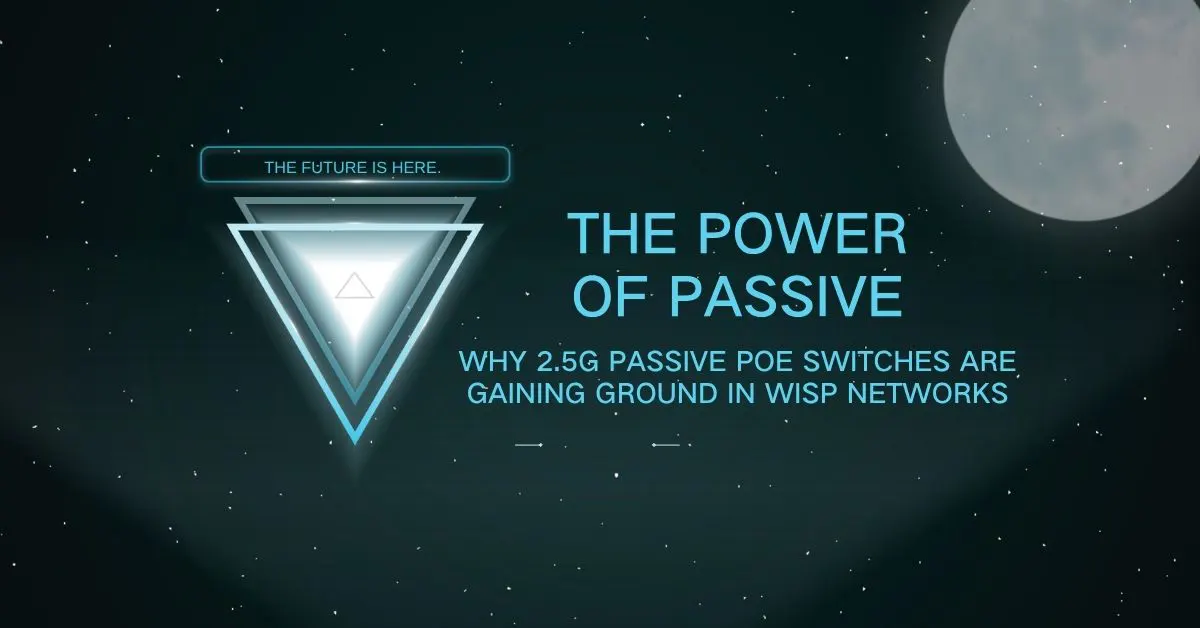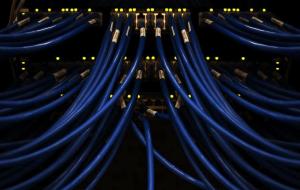Wireless Internet Service Providers (WISPs) operate in a unique and often challenging space—balancing high-performance connectivity with cost-efficiency and minimal infrastructure. As demand for faster internet grows in rural and underserved regions, WISPs are turning to more powerful yet budget-conscious networking solutions. One rising favorite: the 2.5G passive PoE switch.
By blending multi-gigabit performance with simple, voltage-flexible power delivery, these switches are quickly becoming a go-to choice for WISPs seeking reliability, compatibility, and lower latency—without the overhead of active PoE systems.
Why Passive PoE Is Back in the Spotlight
Unlike active PoE, which uses IEEE standards and device negotiation, passive PoE delivers continuous voltage over Ethernet—typically 24V or 48V—without handshake protocols. This “always-on” approach, once seen as old-school, is now experiencing a resurgence among network engineers for a few key reasons:
- No handshake = faster connections
- Lower complexity = fewer failure points
- Voltage options = broader device compatibility
As networks scale and equipment diversifies, the simplicity and reliability of passive PoE are becoming harder to ignore—especially when paired with 2.5G speeds.
2.5G Performance Meets Passive Power
Legacy gigabit links are increasingly inadequate for modern WISP workloads, especially with the rise of high-resolution video surveillance, VoIP, and large-scale backhaul traffic. A 2.5G passive PoE switch solves this by combining:
- 2.5x bandwidth increase over 1G for faster client delivery and link aggregation
- Support for 24V and 48V outputs, ideal for long-distance or high-draw deployments
- Passive power architecture that minimizes latency and improves uptime
It’s a sweet spot between performance and simplicity—something WISPs value in remote and rugged installations.
Passive PoE: Reduced Latency, Increased Reliability
Because passive PoE doesn’t require negotiation, it powers devices instantly—eliminating the 2–3 second delay common with active PoE handshakes. In high-availability environments, that delay can be critical.
And without dependency on LLDP/802.3af/at detection:
- Link uptime improves, especially for remote towers or rooftops
- Troubleshooting becomes easier (no PoE logs or handshake failures)
- Power delivery is more predictable, particularly in cold or unstable conditions
It’s no wonder field technicians prefer passive setups for difficult installations.
Choose Passive Over Active PoE
While active PoE is ideal for enterprise deployments or mixed-device networks, passive PoE is often the better fit for WISPs, especially when:
- You’re using standardized 24V/48V equipments
- You want lower latency and faster power-on
- Budget and simplicity are top priorities
- The network doesn’t need per-port PoE negotiation or advanced power control
For core towers, repeater sites, and long-distance CPE runs, passive PoE switches with 2.5G uplinks offer a cost-effective, high-performance backbone.
Hyconext: Bringing Smart 2.5G Passive PoE to WISPs
At Hyconext, we understand the WISP space inside out. Our 2.5G passive PoE switches are built to deliver:
- Consistent voltage options for flexible deployments
- Rugged performance in outdoor and tower-based setups
- Seamless compatibility with leading WISP gear
- Plug-and-play operation with no handshake delays
If you’re building or upgrading a WISP network, it’s time to take a closer look at the power of passive—redefined for today’s speed and scalability needs.
Upgrade now and prepare your WISP for the future of high-speed networking!



